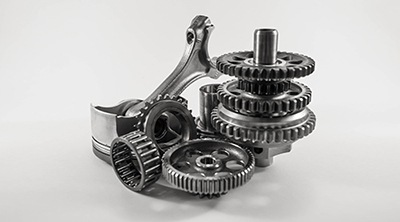Understanding Additive Manufacturing for Aerospace

The aerospace industry has been using additive manufacturing (AM) for many applications. From aircraft and helicopter parts to engines and turbines, 3D technologies save time and money to create stronger, more efficient components. AM has improved part performance, reduced weight, and has helped to remove design and production constraints.
Additive Manufacturing vs. Conventional Manufacturing
Additive manufacturing isn’t just 3D printing. The process involves machining and heat-treating the component. There is also some type of non-destructive inspection, such as a CT scan. Manufacturing steps are simplified in comparison to conventional methods. This does add some complexity when it comes to certification. With so many steps happening simultaneously, the process can be harder to control.
But there has been a precedent for finding different ways to certify parts. When carbon-fiber composite parts started to be used in aerospace, there was a challenge to recognizing the material form and properties being created simultaneously. That range of variation is not as large as what AM produces, but the challenges are similar enough to offer hope for AM.
With conventional manufacturing, the performance of various steps is well-known because constraints at each step are more limiting. A design engineer that knows casting, forging, and machining can create a part model with high confidence that the facility can reproduce it. But design requires more collaboration with the manufacturer to create a design that is both efficient to produce and meets the required quality standards.
The Future of Additive Manufacturing in Aerospace
Additive manufacturing has mainly been limited to noncritical parts like ductwork and interior components where stressed are thermal rather than mechanical. But you can expect AM to play a more significant role in aircraft production for Tier 1 manufacturers. Recently, the first AM titanium structural component, a door latch fitting, has been installed on commercial aircraft.
As technologies advance, manufacturers will be able to transition other structural parts to AM, as well as develop new structural parts by leveraging 3D printing processes. For the new parts made using AM from the start, part geometry will be modified to make machining easier. Design for additive manufacturing is the opportunity still to come.
The best advancements won’t involve just material reduction. They’ll also result in part weight minimization, reduction of the assembly steps needed, and a faster time-to-market, thanks to fewer manufacturing steps. But to realize the full promise of AM, manufacturers will need to identify structural components that might be good candidates for the process.
For help with your challenging aerospace manufacturing application, speak with the robotic integration aviation, space and defense specialists at Genesis Systems, an IPG Company.
Posted in Additive Manufacturing